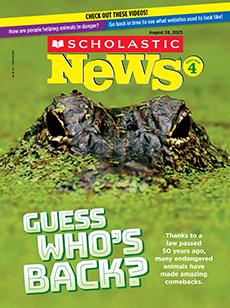Three female manatees arrived at ZooTampa in Florida in 2021. One after the other, the babies had been found swimming alone in nearby waters. Manatee calves stay with their mothers for about two years. But these babies’ moms were nowhere to be found.
So rescue workers stepped in to raise them. They named the orphans Calliope (kuh-LYE-uh-pee), Soleil (soh-LAY), and Piccolina (pih-koh-LEE-nah).
It was the start of an amazing journey of survival. Over the next two years, the manatees would be moved hundreds of miles. They’d travel on trucks and planes before being returned to the wild.
Three female manatees arrived at ZooTampa in Florida in 2021. The babies had been found one after the other. They were swimming alone in nearby waters. Manatee calves stay with their mothers for about two years. But these babies’ moms were nowhere to be found.
Rescue workers stepped in to raise them. They named the orphans Calliope (kuh-LYE-uh-pee), Soleil (soh-LAY), and Piccolina (pih-koh-LEE-nah).
It was the start of an amazing journey of survival. Over the next two years, the manatees would be moved hundreds of miles. They’d travel on trucks and planes before being returned to the wild.

